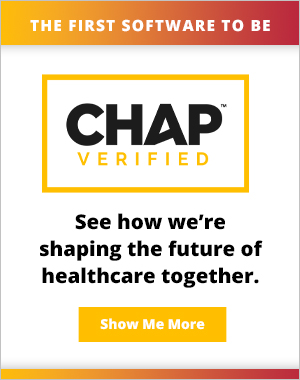
In an era of market contraction, care at home providers face mounting challenges. Regulatory hurdles, reimbursement pressures, staffing shortages, increased competition, and market saturation are converging to shrink referral pipelines and strain operational capacity. Thriving in this environment demands innovation, adaptability, and strategic execution.
At the 2025 Axxess Growth, Innovation and Leadership Experience (AGILE), Momentum HT Consulting Founder and CEO Kristen Duell and Corcoran Consulting Group President and CEO Guy Tommasi led an education session focused on how organizations can navigate these pressures while positioning themselves for sustainable growth. Below are their takeaways.
Service Line Diversification
As traditional referral sources shift and reimbursement models evolve, expanding and integrating service lines has become a critical strategy for growth. Tommasi emphasized the need to rethink legacy approaches and embrace new opportunities.
“[Service line diversification is] one of the things that we really need to embrace more and more,” he said. “We have to do better at connecting the dots in the different services that are offered.”
While home care organizations have historically avoided providing medical care, considering it misaligned with their nonmedical model, Tommasi shared that reevaluating this stance can reveal valuable opportunities that organizations are leaving on the table.
“Our home care agency was involved in a hospital at home program and the rewards were phenomenal,” he said. “We became the provider of choice and an employer of choice, and everything that our caregivers were doing was ADL-related.”
By staying open to new models of care and looking beyond labels, Tommasi said providers can uncover programs that align with their capabilities, open the door to growth, and benefit both the organization and its clients.
“When we look at diversity of programs, always go in with the mindset that just because it may say clinical, nonclinical, ADL, companion, don’t dismiss it because it sounds like ‘X,’” he said. “If you peel back that onion, you’re going to realize, ‘Wait a minute. We can both benefit from this.’”
Recruitment and Retention
As organizations diversify service lines and expand their care models, the ability to attract and retain staff becomes even more critical. Duell said addressing this challenge starts with how organizations support their teams.
“It boils down to … you’ve got to treat your people better,” she said. “Lift them up and give them opportunity and create a culture of care within your organization.”
Tommasi reinforced the value of a flexible, employee-driven culture, citing an agency owner who tailors support to employee needs, from offering instant access to wages to providing a rideshare account for caregivers needing transportation. These accommodations have boosted retention and service delivery without significantly increasing costs.
Marketing, Visibility, and Digital Trust
In a crowded and commoditized market, perception is power. Duell urged leaders to critically assess their digital presence to ensure clear and compelling communication of their organizational narrative.
“When I did a quick search just in this surrounding area, which Dallas is pretty large, every single one of the agencies comes across absolutely the same right now,” she said.
To stand out among competitors, she encouraged organizations to incorporate their unique origin story in their digital messaging and implement visual storytelling through photo and video content.
She underscored the importance of driving, monitoring, and responding to online reviews, recognizing them as a critical factor in shaping public perception and influencing buyer behavior.
“If you can do one thing really well to increase your footprint and visibility, it is going to hands-down be driving reviews and responding to those reviews,” Duell said. “That’s the type of stuff that’s really going to make sure that you are rising to the top with all these different changes that are happening.”
Technology and Operational Strategy
While digital storytelling builds trust externally, operational performance must back it up. In a shrinking market, where differentiation is increasingly difficult, technology becomes a lever to achieve optimal efficiency, demonstrate value, and cultivate stronger, more resilient partnerships.
Tommasi pointed to data as the key differentiator in competitive positioning.
“Data is what separates you from the pack,” he said. “The days of ‘I really like him,’ ‘I really like her,’ ‘I love their agency,’ are changing, so you need to look at how you can take that data and how you can establish the partnerships that are so critical in moving forward.”
He outlined four essential metrics that every organization should be able to report: rehospitalization rates, functional outcomes, and patient and caregiver satisfaction.
“Why?” Tommasi asked. “Because every one of those impacts every stakeholder.”
Duell added that technology should support care delivery, not complicate it.
“Choose technology that disappears like magic,” she said. “What I mean by that is it shouldn’t be the primary focus of your clinicians. Technology should not be at the forefront of every caregiver. You should be using technology that makes it easier for them.”
The right technology tools support staff, streamline workflows, improve data capture, and facilitate the reporting of meaningful outcomes.
Together these insights highlight a unified strategy where service line diversification, staff empowerment, digital trust, and the effective use of technology and data align to drive sustainable growth in home-based care.
Join us at AGILE 2026, May 4-6 in Dallas, to explore the strategies, technologies, and partnerships shaping the future of care at home. Click here to register.
